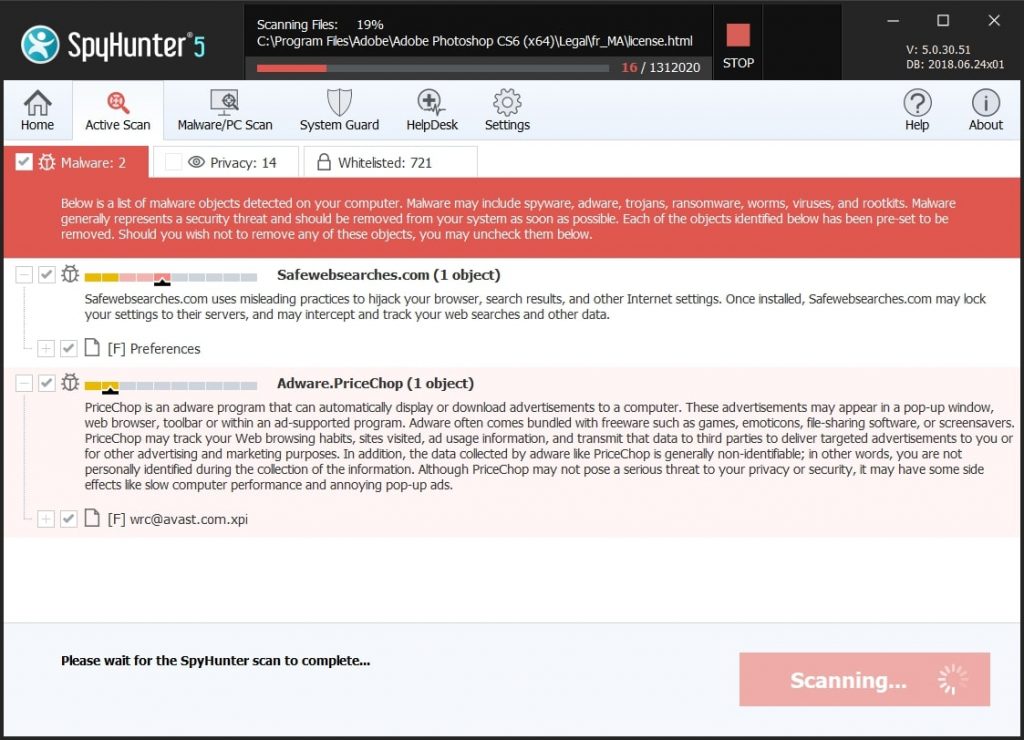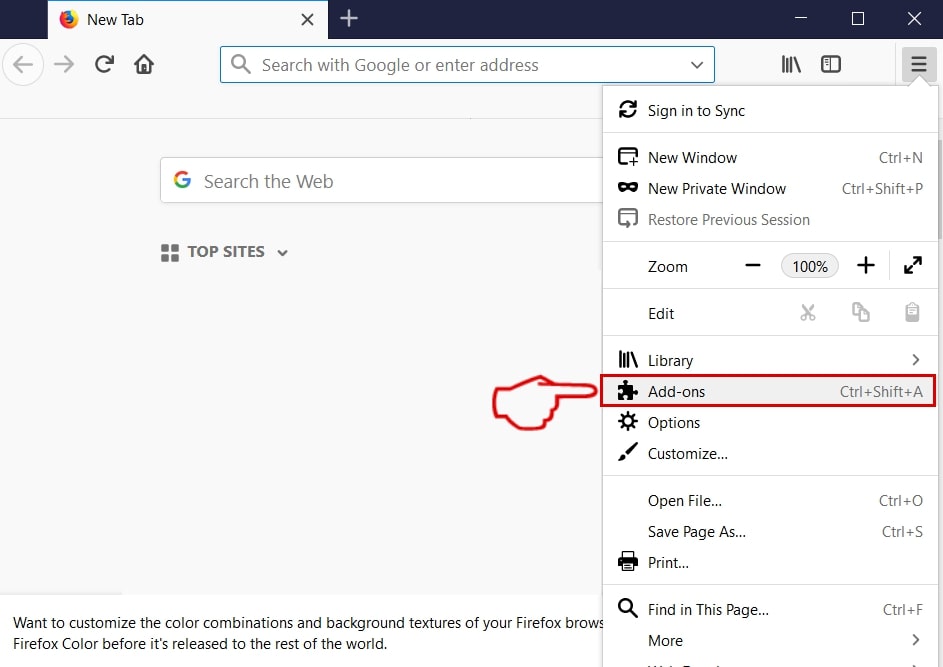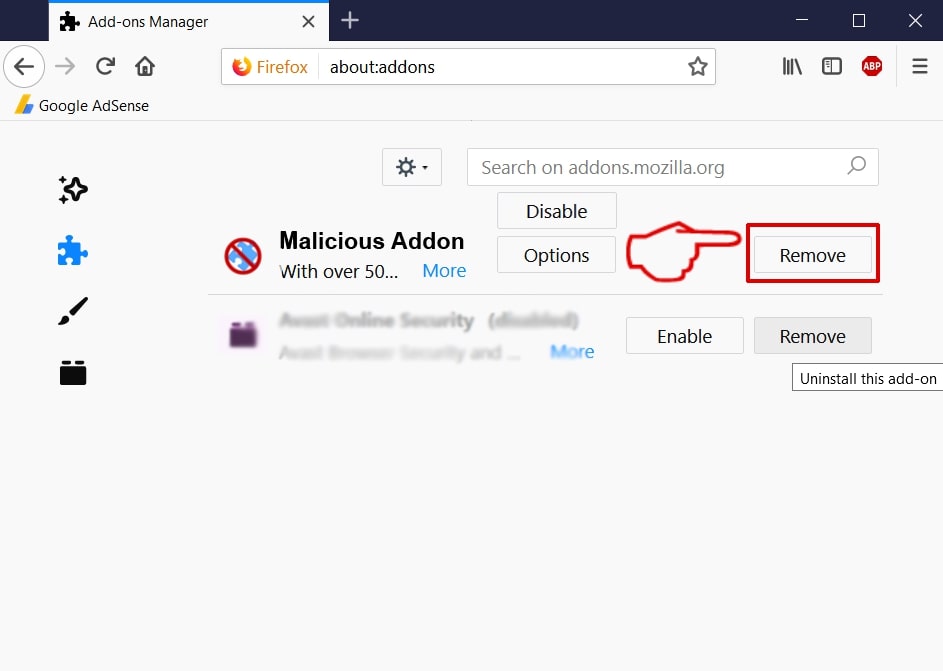ProtocolPort Adware
 Have you been trying to get rid of an application called ProtocolPort? Perhaps your Mac’s performance has been affected by ProtocolPort? You shouldn’t be surprised by any unwanted behavior associated with this app, as it is classified as adware.
Have you been trying to get rid of an application called ProtocolPort? Perhaps your Mac’s performance has been affected by ProtocolPort? You shouldn’t be surprised by any unwanted behavior associated with this app, as it is classified as adware.
Adware attaches to your browser or operating system to generate intrusive pop-up windows, notifications, and redirects. You may have been “infected” by this so called “virus” through a bundled download or due to clicking on a suspicious pop-up notification. Whatever the reason for having ProtocolPort installed on your Mac is, you should consider removing it as soon as possible to avoid further compromise.
This app is similar to FlexibleProtocol.

ProtocolPort Summary
| Name | ProtocolPort also known as Adware.MAC.Generic.19928, OSX/Agent.sphdt, OSX/Agent.BJ, Trojan:MacOS/Dakkatoni.A!MTB. |
| Type | PUP, Adware |
| Short Description | A questionable application designed to generate pop-ups. Possibly causes browser redirects to suspicious pages. |
| Symptoms | Your browser’s performance is affected due to the amount of intrusive ads. The program may start every time you start the affected Mac, and is possibly persistent in any attempt to remove it manually. |
| Distribution Method | Freeware Installations, Bundled Packages, Corrupted Websites, Fake Software Updates |
| Detection Tool |
See If Your System Has Been Affected by malware
Download
Malware Removal Tool
|
Why Is ProtocolPort Running on My Mac?
The upper question means that you haven’t downloaded the ProtocolPort application willingly. So, if it is running on your system without your knowledge, you may have downloaded it via a bundled installer. Bundling is a tricky monetization method utilized by third-party developers. It may not be malicious but it could definitely cause you a headache or two.
Bundling is the reason for most unwanted downloads of adware and browser hijackers that alter your browser’s default settings. However, it is not the only reason for having an unwanted app silently installed on your Mac. Agreeing to receive push notifications from suspicious websites could also be the reason. For that matter, clicking on any pop-up generated by a bogus website could have caused the sudden appearance of the ProtocolPort adware.
Outcomes of Having ProtocolPort Adware Run on Your Mac
Once started on your Mac, the adware may complete a variety of unwanted changes without asking for your permission. All the changes it applies make the system more vulnerable to future malware intrusions.
Keep in mind that the ads ProtocolPort could generate may be part of shady advertising schemes. If so, you may open a page that contains a malicious script that downloads and installs unwanted/harmful apps.
Furthermore, the adware may also add some tracking technologies to your main browser and start collecting data about your online behavior. As a result, your browser may be flooded with targeted ads, or your details could be sold to undisclosed third parties.
Either way, it would be better if you perform a thorough removal process of ProtocolPort as soon as possible.

Remove ProtocolPort Mac Adware
To remove the ProtocolPort adware program and all its associated files, you should complete several removal steps. The guide below gives you the option to choose between manual and automatic removal approaches. To entirely eliminate files installed by undesired programs and improve the overall condition of your Mac, we recommend that you combine the steps.
Keep in mind that inexperienced computer users may face difficulties while removing some of the adware files. If you don’t feel comfortable with the manual steps, navigate to the automatic removal and get rid of the adware with the help of an advanced anti-malware tool.
How to protect your Mac from adware in the future? Always read carefully all details listed in the installers of apps you plan to download. Take a close look at the information presented under the Advanced/Custom step. Doing this will help you notice additional downloads and opt out of their installation.
Steps to Prepare Before Removal:
Before starting to follow the steps below, be advised that you should first do the following preparations:
- Backup your files in case the worst happens.
- Make sure to have a device with these instructions on standy.
- Arm yourself with patience.
- 1. Scan for Mac Malware
- 2. Uninstall Risky Apps
- 3. Clean Your Browsers
Step 1: Scan for and remove ProtocolPort files from your Mac
When you are facing problems on your Mac as a result of unwanted scripts and programs such as ProtocolPort, the recommended way of eliminating the threat is by using an anti-malware program. SpyHunter for Mac offers advanced security features along with other modules that will improve your Mac’s security and protect it in the future.

Quick and Easy Mac Malware Video Removal Guide
Bonus Step: How to Make Your Mac Run Faster?
Mac machines maintain probably the fastest operating system out there. Still, Macs do become slow and sluggish sometimes. The video guide below examines all of the possible problems that may lead to your Mac being slower than usual as well as all of the steps that can help you to speed up your Mac.
Step 2: Uninstall ProtocolPort and remove related files and objects
1. Hit the ⇧+⌘+U keys to open Utilities. Another way is to click on “Go” and then click “Utilities”, like the image below shows:

2. Find Activity Monitor and double-click it:

3. In the Activity Monitor look for any suspicious processes, belonging or related to ProtocolPort:


4. Click on the "Go" button again, but this time select Applications. Another way is with the ⇧+⌘+A buttons.
5. In the Applications menu, look for any suspicious app or an app with a name, similar or identical to ProtocolPort. If you find it, right-click on the app and select “Move to Trash”.

6. Select Accounts, after which click on the Login Items preference. Your Mac will then show you a list of items that start automatically when you log in. Look for any suspicious apps identical or similar to ProtocolPort. Check the app you want to stop from running automatically and then select on the Minus (“-“) icon to hide it.
7. Remove any leftover files that might be related to this threat manually by following the sub-steps below:
- Go to Finder.
- In the search bar type the name of the app that you want to remove.
- Above the search bar change the two drop down menus to “System Files” and “Are Included” so that you can see all of the files associated with the application you want to remove. Bear in mind that some of the files may not be related to the app so be very careful which files you delete.
- If all of the files are related, hold the ⌘+A buttons to select them and then drive them to “Trash”.
In case you cannot remove ProtocolPort via Step 1 above:
In case you cannot find the virus files and objects in your Applications or other places we have shown above, you can manually look for them in the Libraries of your Mac. But before doing this, please read the disclaimer below:
1. Click on "Go" and Then "Go to Folder" as shown underneath:

2. Type in "/Library/LauchAgents/" and click Ok:

3. Delete all of the virus files that have similar or the same name as ProtocolPort. If you believe there is no such file, do not delete anything.

You can repeat the same procedure with the following other Library directories:
→ ~/Library/LaunchAgents
/Library/LaunchDaemons
Tip: ~ is there on purpose, because it leads to more LaunchAgents.
Step 3: Remove ProtocolPort – related extensions from Safari / Chrome / Firefox









ProtocolPort-FAQ
What is ProtocolPort on your Mac?
The ProtocolPort threat is probably a potentially unwanted app. There is also a chance it could be related to Mac malware. If so, such apps tend to slow your Mac down significantly and display advertisements. They could also use cookies and other trackers to obtain browsing information from the installed web browsers on your Mac.
Can Macs Get Viruses?
Yes. As much as any other device, Apple computers do get malware. Apple devices may not be a frequent target by malware authors, but rest assured that almost all of the Apple devices can become infected with a threat.
What Types of Mac Threats Are There?
According to most malware researchers and cyber-security experts, the types of threats that can currently infect your Mac can be rogue antivirus programs, adware or hijackers (PUPs), Trojan horses, ransomware and crypto-miner malware.
What To Do If I Have a Mac Virus, Like ProtocolPort?
Do not panic! You can easily get rid of most Mac threats by firstly isolating them and then removing them. One recommended way to do that is by using a reputable malware removal software that can take care of the removal automatically for you.
There are many Mac anti-malware apps out there that you can choose from. SpyHunter for Mac is one of the reccomended Mac anti-malware apps, that can scan for free and detect any viruses. This saves time for manual removal that you would otherwise have to do.
How to Secure My Data from ProtocolPort?
With few simple actions. First and foremost, it is imperative that you follow these steps:
Step 1: Find a safe computer and connect it to another network, not the one that your Mac was infected in.
Step 2: Change all of your passwords, starting from your e-mail passwords.
Step 3: Enable two-factor authentication for protection of your important accounts.
Step 4: Call your bank to change your credit card details (secret code, etc.) if you have saved your credit card for online shopping or have done online activiites with your card.
Step 5: Make sure to call your ISP (Internet provider or carrier) and ask them to change your IP address.
Step 6: Change your Wi-Fi password.
Step 7: (Optional): Make sure to scan all of the devices connected to your network for viruses and repeat these steps for them if they are affected.
Step 8: Install anti-malware software with real-time protection on every device you have.
Step 9: Try not to download software from sites you know nothing about and stay away from low-reputation websites in general.
If you follow these reccomendations, your network and Apple devices will become significantly more safe against any threats or information invasive software and be virus free and protected in the future too.
More tips you can find on our MacOS Virus section, where you can also ask any questions and comment about your Mac problems.
About the ProtocolPort Research
The content we publish on SensorsTechForum.com, this ProtocolPort how-to removal guide included, is the outcome of extensive research, hard work and our team’s devotion to help you remove the specific macOS issue.
How did we conduct the research on ProtocolPort?
Please note that our research is based on an independent investigation. We are in contact with independent security researchers, thanks to which we receive daily updates on the latest malware definitions, including the various types of Mac threats, especially adware and potentially unwanted apps (PUAs).
Furthermore, the research behind the ProtocolPort threat is backed with VirusTotal.
To better understand the threat posed by Mac malware, please refer to the following articles which provide knowledgeable details.













